This article was medically reviewed by Luba Lee, FNP-BC, MS. Luba Lee, FNP-BC is a Board-Certified Family Nurse Practitioner (FNP) and educator in Tennessee with over a decade of clinical experience. Luba has certifications in Pediatric Advanced Life Support (PALS), Emergency Medicine, Advanced Cardiac Life Support (ACLS), Team Building, and Critical Care Nursing. She received her Master of Science in Nursing (MSN) from the University of Tennessee in 2006.
There are 20 references cited in this article, which can be found at the bottom of the page.
This article has been viewed 186,021 times.
Feelings of numbness or tingling in your hands are annoying but, fortunately, pins and needles usually go away quickly. Holding your hands in a relaxed position or giving them a good shake should do the trick. While occasional, temporary numbness is normal, frequent symptoms could be a sign of an underlying issue. Carpal tunnel syndrome is the most common cause of persistent numbness in the hands, and it can usually be managed with home treatment. Though less likely, hand numbness could also be related to degenerative disk disease[1] or a pinched nerve in your neck.[2] See your doctor for an accurate diagnosis and for help managing any underlying conditions.
Steps
Relieving Occasional Numbness
-
1Hold your hands in a comfortable, neutral position. Numbness and tingling can occur when you sleep on your hands or hold them in an awkward position. Changing positions usually does the trick. Relax your hands and arms, and keep your elbows and wrists straight.[3]
-
2Shake your hands until the numbness subsides. If numbness persists for longer than 30 seconds after changing positions, try shaking your hands at the wrists. Shake your hands vigorously, but don’t shake so hard that your wrists pop or crack.[4]
- If you slept on your hand, your nerves and circulation were compressed for a long duration. Numbness might stick around longer than if you just held your hand in an awkward position for a few minutes.
Advertisement -
3Run your hands under warm water for 2 to 3 minutes. If your hands are still numb, hold them under running water that’s about 90 to 100 °F (32 to 38 °C). Be sure the water is warm instead of hot. Slowly flex and stretch your hands and wrists as you hold them under the water.[5]
- Warm water can increase blood flow and soothe your hands. It’s also recommended for numbness related to underlying conditions, such as carpal tunnel syndrome and Raynaud’s phenomenon.
-
4See your doctor if you experience frequent or asymmetrical numbness. Occasional, temporary numbness is normal. However, numbness that's frequent, persistent, or on just one side of your body could be a sign of an underlying condition, such as nerve strain or damage.[6]
- Carpal tunnel syndrome is the most common nerve condition related to numbness in the hands and forearms. Less common causes include fibromyalgia, multiple sclerosis, and spinal disorders.
- See a doctor promptly for numbness related to an injury or if you experience dizziness, difficulty talking, weakness, headache, or confusion.
Dealing with Nerve Conditions
-
1Tell your doctor which parts of your hands are affected. Different forms of nerve strain or damage affect distinct parts of the hand. Your doctor can perform tests to accurately diagnose nerve compression or damage. They’ll examine your forearms and hands, have you move your hands and fingers and, if necessary, perform an x-ray.[7]
- Numbness in the thumb, index, middle, and ring fingers (and the side of your palm with these fingers) is a symptom of carpal tunnel syndrome.
- If your ring and little fingers become numb when you bend your elbow, cubital tunnel syndrome could be the issue.
- Numbness or pain concentrated at the top of the hand could be due to a compressed radial nerve.
-
2Take frequent stretch breaks during repetitive activities, such as typing. Every 20 to 30 minutes, hold your hands in a prayer pose about 6 inches (15 cm) in front of your chest. Keeping your hands in the prayer position, raise your elbows until you feel a stretch in your forearms. Hold the stretch for 10 to 20 seconds, then relax.[8]
- You can also extend your right arm in front of you with your wrist bent, so the back of your hand faces you. Use your left hand to gently pull your right fingers toward you so you feel a stretch in your right forearm.
- Hold the stretch for 10 to 20 seconds, then switch arms.
-
3Alternate soaking your hands in cold and warm water. Fill one bucket with cold water and another with warm (not hot) water. Soak your hands and forearms in the cold water for 2 to 3 minutes, then soak them in the warm water. Continue alternating until you've held your hands in each bucket 3 times.[9]
- Try soaking your hands in cold and warm water 3 to 4 times daily, or whenever you feel numbness or tingling.
-
4Wear wrist braces while you sleep for carpal tunnel syndrome. For carpal tunnel syndrome, wear wrist braces to keep your hands and forearms in neutral positions while you sleep.[10]
- Ask your doctor to recommend the right brace for your particular issue.
-
5Wear elbow braces for cubital tunnel syndrome while you sleep. Bending the elbow aggravates cubital tunnel syndrome, so wearing elbow braces at night is best for this condition. Ask your doctor to recommend the best brace.[11]
- You can also wrap a towel around the appropriate joint, then use tape to secure it.
-
6Ask your doctor if they recommend a cortisone shot. If numbness, tingling, and pain interfere with your daily activities, a corticosteroid shot might provide relief. While a cortisone shot can relieve flare-ups, its effects are temporary.[12]
- You might experience pain and swelling at the injection site for the first 1 to 2 days after getting a cortisone shot. If necessary, apply ice for 15 minutes every 3 hours.
- Your doctor might also recommend an oral corticosteroid, such as prednisone. Let them know if you have diabetes, as corticosteroids can make it difficult to regulate insulin levels.[13]
-
7See a physical therapist for numbness related to neck issues. Since the nerves in the hands are rooted in the neck, spinal problems can cause numbness throughout the arms, hands, and fingers. If necessary, ask your doctor to refer you to a licensed physical therapist or chiropractor.[14]
- Serious neck issues, such as bone spurs or a herniated disc, might require surgery.
-
8Quit smoking and drinking alcohol, if necessary. Smoking and heavy drinking can constrict blood flow and aggravate nerve issues. If you’re a smoker, ask your doctor or pharmacist for tips on quitting. If you drink more than the recommended amount, try to cut down your consumption.[15]
- The recommended intake for men is up to 2 drinks per day. For women, the recommended amount is 1 drink.[16]
Managing Underlying Conditions
-
1Ask your doctor if you need to consume more vitamin B12. Symptoms of a vitamin B deficiency include numbness in the hands, legs, or feet, balance problems, difficulty thinking, weakness, and yellowing of the skin. If you suspect you have a deficiency, talk to your doctor about making dietary changes or taking a vitamin supplement.[17]
- Sources of vitamin B12 include red meat, poultry, seafood, dairy products, and eggs. Plants don’t make vitamin B12, so strict vegetarians and vegans are at a higher risk of developing a deficiency.
- Talk to you doctor before taking any vitamin or dietary supplement.
-
2Manage your blood glucose levels if you’re diabetic. High glucose levels and low insulin levels related to diabetes can cause diabetic neuropathy, which is a type of nerve damage. If necessary, work with your doctor or specialist to get your glucose levels under control. Your doctor or pharmacist can also recommend oral or topical medication to help relieve numbness and pain.[18]
-
3Get tested for Raynaud’s phenomenon. People with Raynaud’s phenomenon have limited blood flow to the fingers and toes, which causes them to feel numb and cold. During attacks, fingers or toes might also turn white or blue. If your doctor suspects you have Raynaud’s phenomenon, they’ll perform a physical exam, order a blood test, and look at your fingernails under a microscope.[19]
- If you have Raynaud’s phenomenon, do your best to keep your hands and feet warm. Regular exercise can help improve blood flow, but you should consult your doctor before starting a new workout routine.
- Your doctor might also prescribe medication to regulate your blood pressure or relax constricted blood vessels.[20]
- Tobacco, alcohol, and caffeine can bring on attacks, so avoid these substances.
-
4Consult your doctor for numbness related to cancer treatment. Numbness in the hands, feet, and other body parts is a common side effect of chemotherapy drugs. Tell your doctor or specialist about these or any other side effects. They might be able to prescribe medication to help relieve pain, numbness, or tingling.[21]
- Some people who experience numbness and tingling due to chemotherapy find that acupuncture helps relieve their discomfort.[22]
References
- ↑ https://www.hopkinsmedicine.org/health/conditions-and-diseases/degenerative-disc-disease
- ↑ https://my.clevelandclinic.org/health/diseases/6481-pinched-nerves
- ↑ https://www.betterhealth.vic.gov.au/health/conditionsandtreatments/pins-and-needles
- ↑ https://www.bmj.com/content/355/bmj.i6386
- ↑ https://health.clevelandclinic.org/5-ways-can-ease-carpal-tunnel-syndrome-pain-without-surgery/
- ↑ https://www.betterhealth.vic.gov.au/health/conditionsandtreatments/pins-and-needles
- ↑ http://www.massgeneral.org/ortho-hand/conditions-treatments/numbness_and_tingling.aspx
- ↑ https://www.ninds.nih.gov/Disorders/Patient-Caregiver-Education/Fact-Sheets/Carpal-Tunnel-Syndrome-Fact-Sheet
- ↑ https://web.eecs.umich.edu/~cscott/rsi.html
- ↑ https://www.uofmhealth.org/health-library/hw212104
- ↑ https://orthoinfo.aaos.org/en/diseases--conditions/ulnar-nerve-entrapment-at-the-elbow-cubital-tunnel-syndrome/
- ↑ https://orthoinfo.aaos.org/en/diseases--conditions/carpal-tunnel-syndrome/
- ↑ https://my.clevelandclinic.org/health/treatments/17759-cortisone-shots
- ↑ http://www.massgeneral.org/ortho-hand/conditions-treatments/numbness_and_tingling.aspx
- ↑ https://www.betterhealth.vic.gov.au/health/conditionsandtreatments/pins-and-needles
- ↑ https://www.cdc.gov/alcohol/faqs.htm
- ↑ https://www.health.harvard.edu/blog/vitamin-b12-deficiency-can-be-sneaky-harmful-201301105780
- ↑ https://my.clevelandclinic.org/health/diseases/14737-neuropathy
- ↑ https://www.niams.nih.gov/health-topics/raynauds-phenomenon#tab-living-with
- ↑ https://www.niams.nih.gov/health-topics/raynauds-phenomenon#tab-treatment
- ↑ https://www.cancer.gov/publications/patient-education/nerve.pdf
- ↑ https://www.mskcc.org/blog/managing-chemotherapy-induced-peripheral-neuropathy-after-treatment
- ↑ https://www.mayoclinic.org/symptoms/numbness-in-hands/basics/when-to-see-doctor/sym-20050842
About This Article
Occasional, temporary numbness or tingling in your hands can usually be treated quickly and easily at home. For example, try holding your hands in a comfortable, neutral position to get rid of pins and needles that may be from sleeping on your hands or holding them in an awkward position. If the numbness lasts longer than 30 seconds after changing positions, try shaking your hands at the wrists to get your circulation going. For numbness that persists, run your hands under warm water for 2 to 3 minutes while stretching and flexing your hands and wrists to increase blood flow. If the numbness is frequent or persistent, see your doctor to rule out any underlying conditions, like nerve damage. For more tips from our Medical co-author, including how to deal with nerve conditions like Carpal tunnel syndrome, keep reading!
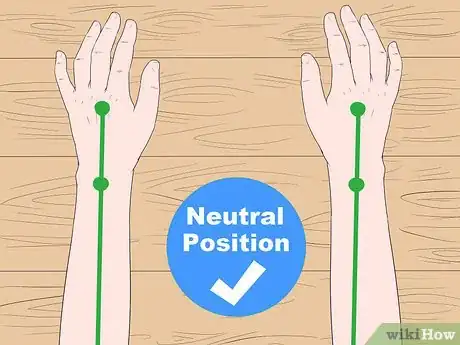

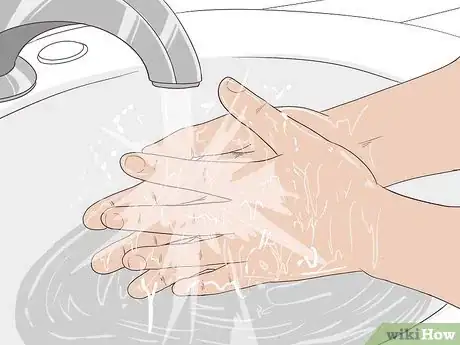

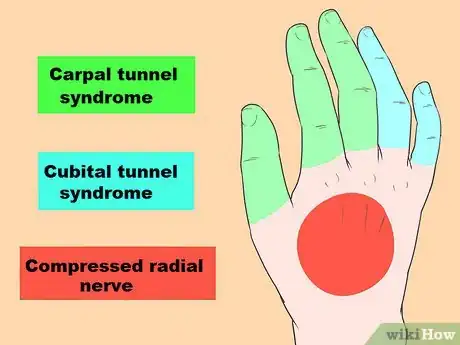

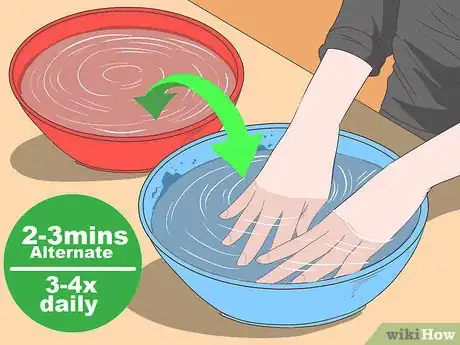


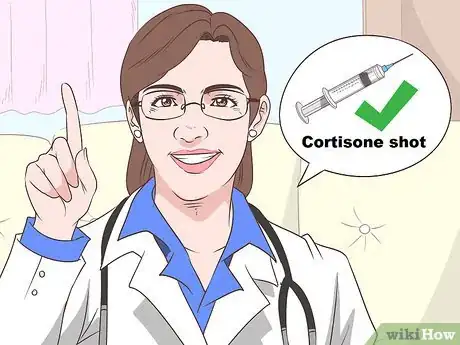
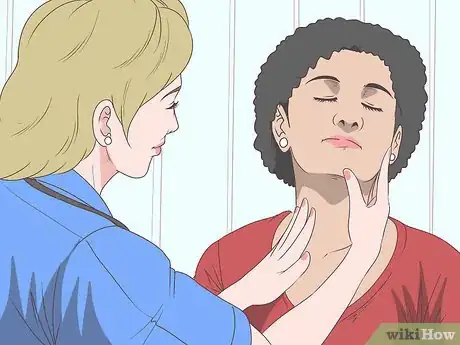



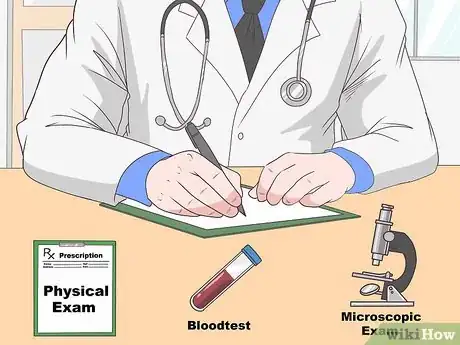


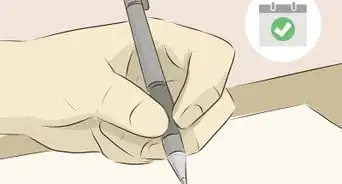

-Step-15-Version-3.webp)




















-Step-15-Version-3.webp)



































Medical Disclaimer
The content of this article is not intended to be a substitute for professional medical advice, examination, diagnosis, or treatment. You should always contact your doctor or other qualified healthcare professional before starting, changing, or stopping any kind of health treatment.
Read More...